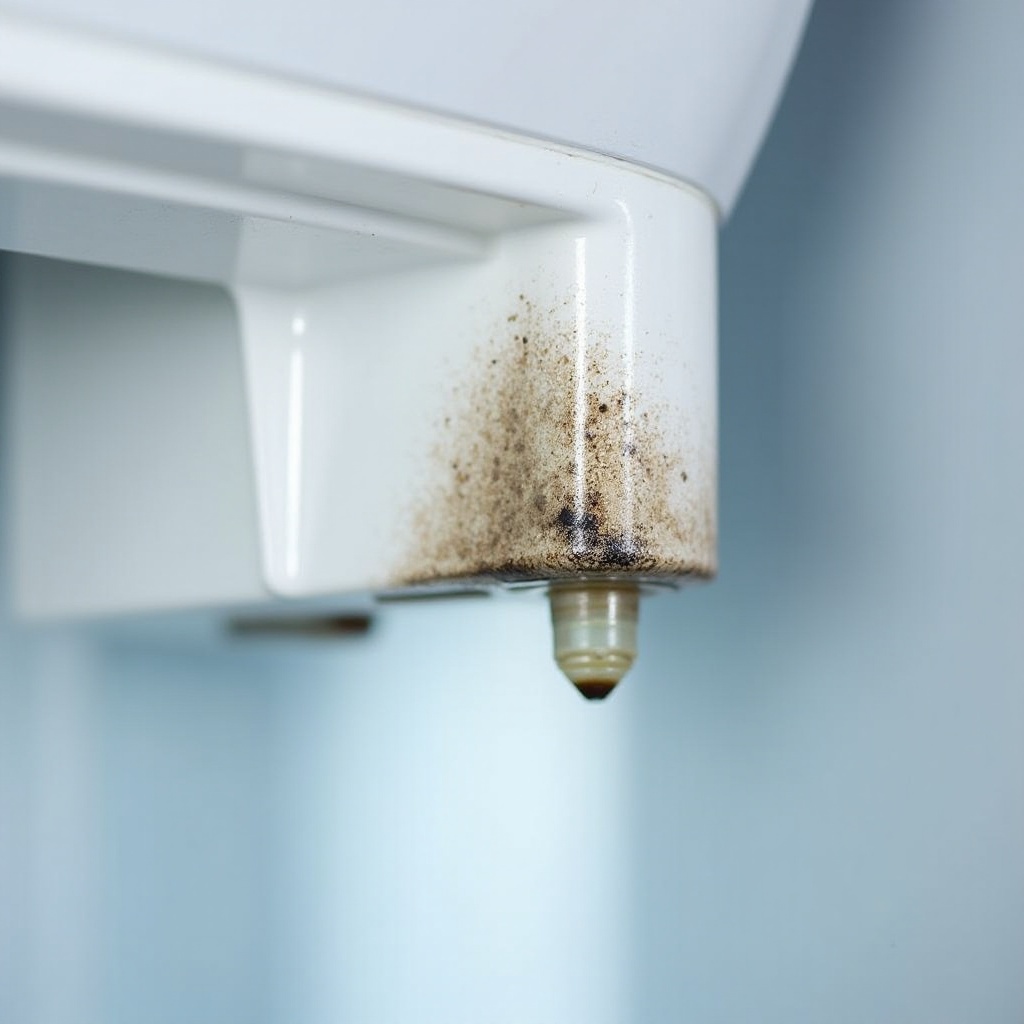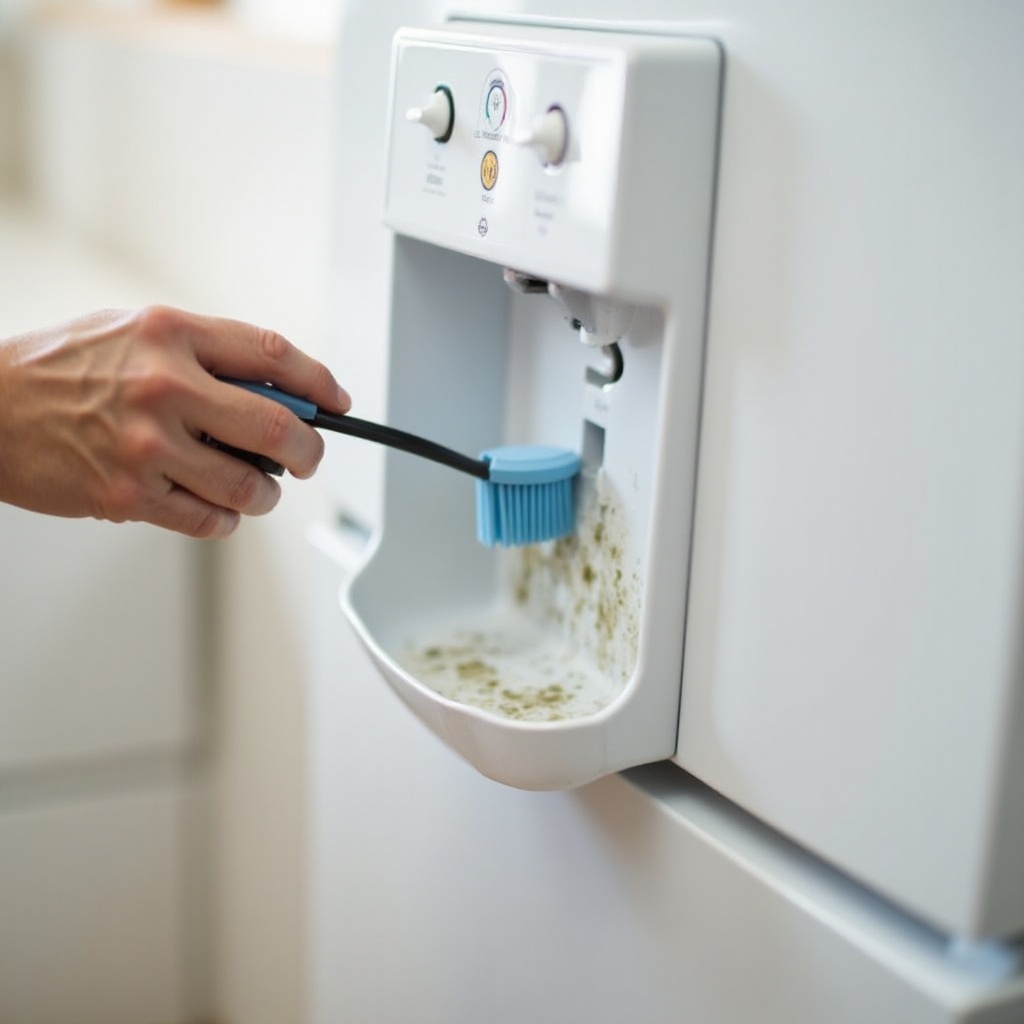Introduction
Your refrigerator water dispenser is a convenient feature that provides cold, filtered water on demand. However, mold can quickly become a significant problem if the dispenser isn’t cleaned regularly. Mold not only looks unsightly but can also pose health risks. Keeping your refrigerator water dispenser mold-free ensures safe, clean water for you and your family.

Causes and Detection of Mold in Water Dispensers
Mold thrives in moist, dark environments, making your refrigerator water dispenser an ideal breeding ground. Understanding the causes and how to detect mold is essential for effective cleaning.
Common Reasons for Mold Growth
Mold thrives in environments that are moist and dark. Some common reasons for mold growth in your dispenser include:- Infrequent cleaning- Standing water or minor leaks- Warm temperatures inside the refrigerator- The accumulation of organic particles and contaminants
By understanding these causes, you can address the root of the problem and prevent mold from reoccurring.
How to Detect Mold in Your Water Dispenser
Regular inspection of your water dispenser helps in early mold detection. Look for the following signs:- Visible black, green, or white spots around the nozzle and inside the dispenser- An unpleasant, musty odor from the water or dispenser- Changes in water taste or appearance
If you notice any of these signs, it is time for a thorough cleaning of your refrigerator water dispenser.

Preparation for Cleaning
Before you start the cleaning process, gather the necessary supplies and take some safety measures to ensure an effective and safe procedure.
Necessary Cleaning Supplies
Prepare the following items:- White vinegar- Baking soda- A small brush or old toothbrush- Soft cloths or sponge- Warm water- A bucket or basin
Having these supplies on hand will make the cleaning process more efficient.
Important Safety Measures
To ensure you clean safely and effectively, follow these precautions:- Unplug the refrigerator to avoid electrical hazards.- Wear gloves to protect your hands from cleaning solutions.- Ensure proper ventilation by opening windows or turning on exhaust fans.
With proper preparation, you can ensure a thorough and safe cleaning process.
Step-by-Step Guide to Cleaning Mold
Let's dive into the step-by-step process for removing mold from your refrigerator water dispenser.
Turning Off and Emptying the Dispenser
- Turn off the refrigerator and unplug it.
- Remove the water reservoir or tank, if your model allows.
- Empty any remaining water in the dispenser into a bucket or sink.
Removing and Cleaning Components
- Detach removable parts such as the drip tray, nozzle, and reservoir.
- Clean these components with warm, soapy water, scrubbing with a brush to remove any mold residues.
- Rinse and dry them thoroughly before reassembling.
Cleaning the Dispenser and Tubing
Use the following methods to clean the internal parts:
Using White Vinegar1. Mix a solution of one part vinegar to two parts water.2. Pour the solution into the dispenser and let it sit for 10-15 minutes.3. Scrub the dispenser and tubing with a brush to dislodge mold.4. Run the vinegar solution through the dispenser to flush out any remaining mold.
Using Baking Soda1. Create a paste of baking soda and water.2. Apply the paste to mold-affected areas and scrub with a brush.3. Rinse thoroughly with warm water.
After cleaning, reassemble the parts and plug the refrigerator back in. Run a few cycles of fresh water through the dispenser to ensure all cleaning residue is removed.
Regular Maintenance Tips
Maintaining a clean water dispenser goes beyond a single deep cleaning. Regular upkeep is crucial in preventing mold re-growth.
Suggested Cleaning Intervals
Clean your water dispenser at least once every two months to keep it mold-free. Increase the frequency if you live in a humid environment or use the dispenser heavily.
Using Preventative Solutions like Anti-Mold Sprays
Anti-mold sprays designed for kitchen appliances can create a barrier against mold growth. Ensure these sprays are food-safe and follow the manufacturer’s instructions for application and safety.
Dealing with Persistent Mold
If mold persists despite your best efforts, consider advanced solutions.
When DIY Cleaning Isn't Enough
Persistent mold might indicate hidden issues like leaks or faulty components that trap moisture. If mold reappears frequently, further steps need to be taken.
Selecting Professional Mold Removal Services
Consult a professional specializing in appliance cleaning and mold remediation. They can identify the root cause of the mold problem and recommend effective, long-term solutions.

Conclusion
Maintaining a mold-free refrigerator water dispenser ensures that you and your family enjoy clean, safe drinking water. Follow these steps and tips to keep mold at bay, and don't hesitate to seek professional help for persistent issues.
Frequently Asked Questions
How often should I clean my refrigerator water dispenser to prevent mold?
To prevent mold, clean your refrigerator water dispenser at least once every two months. Increase the frequency if you live in a humid environment or use the dispenser heavily.
Can I use bleach to clean mold from my water dispenser?
While bleach is effective at killing mold, it can leave a strong odor and residue. Using natural cleaning agents like vinegar and baking soda is recommended for a safer, more pleasant solution.
Is it safe to drink water from a dispenser that had mold in it?
No, drinking water from a mold-contaminated dispenser can pose health risks. Always clean the dispenser thoroughly before using it to ensure the water is safe to drink.
